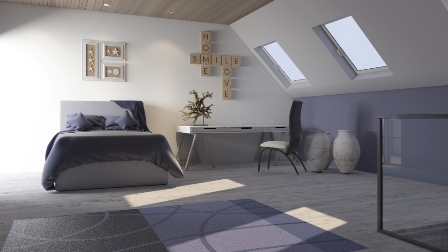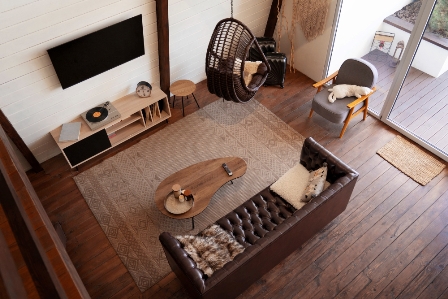Are you yearning for a simpler and more sustainable lifestyle? Are you fascinated by the idea of downsizing and embracing minimalism? Look no further than a tiny house! In this article, we’ll explore the world of tiny houses with a specific focus on two-bedroom designs. Discover the benefits, innovative space optimization techniques, and unique features of these small yet comfortable dwellings. Join us on this journey to unlock the potential of tiny house living.
The concept of a tiny house involves downsizing to a smaller, more manageable living space. These compact dwellings typically range between 100 and 400 square feet, offering a cozy and efficient lifestyle. With the increasing popularity of tiny houses, it’s no wonder that enthusiasts are exploring ways to accommodate families while maintaining the charm of a minimalist lifestyle. Enter the tiny house 2 bedroom designs, providing enough space for a small family or guests.
What is a Tiny House?
A tiny house is a compact and fully functional living space designed to prioritize simplicity, efficiency, and sustainability. These houses embrace the idea of living with less, allowing individuals to focus on experiences and relationships rather than material possessions. While the average American home spans around 2,500 square feet, tiny houses encourage mindful consumption and a smaller carbon footprint.
Benefits of a Tiny House
Living in a tiny house offers several benefits, including:
Affordability:
Tiny houses are significantly more affordable compared to traditional homes, allowing individuals to save money on mortgage payments, utilities, and maintenance costs.
Environmental Sustainability:
Tiny houses have a smaller ecological footprint due to their reduced energy consumption and material usage. They promote a greener lifestyle and can be designed to incorporate sustainable features like solar panels and rainwater harvesting systems.
Simplified Living:
Living in a tiny house encourages a simpler and clutter-free lifestyle. It promotes intentional living, allowing individuals to focus on what truly matters and reduce unnecessary possessions.
Designing Your Tiny House 2 Bedroom
When it comes to designing a tiny house with two bedrooms, maximizing space and functionality are key. Here are some tips to help you create a comfortable and efficient living space:
Loft Bedrooms
Utilize the vertical space in your tiny house by incorporating loft bedrooms. These elevated sleeping areas can be accessed by ladders or stairs, providing privacy and separating the sleeping quarters from the rest of the house. Loft bedrooms are a popular choice in tiny houses and allow for more living space on the ground level.

Multi-Purpose Furniture
Invest in furniture pieces that serve multiple functions. For example, a sofa can double as a guest bed, and a dining table can transform into a workspace. By choosing versatile furniture, you can make the most of your limited space without compromising on comfort or style.

Smart Storage Solutions
Effective storage is crucial in a tiny house. Embrace innovative storage solutions such as built-in cabinets, hidden compartments, and under-stair storage. Use vertical shelving and wall-mounted organizers to maximize space and keep your belongings organized.
Natural Light and Openness
Create a sense of spaciousness in your tiny house by incorporating large windows and skylights. Natural light can make a small space feel bright and airy. Consider using light-colored paint and mirrors to reflect light and create the illusion of a larger space.
Outdoor Living Space
Extend your living area to the outdoors by incorporating a patio or deck. This additional space can be used for relaxing, entertaining, or enjoying meals alfresco. Make use of folding furniture and portable grills to optimize your outdoor living experience.
Space Optimization in Two-Bedroom Tiny Houses
To make the most of limited space, two-bedroom tiny houses employ innovative space optimization techniques. Vertical space utilization is key, with loft bedrooms providing additional sleeping areas. Multipurpose furniture, such as convertible sofas and hidden storage compartments, help maximize functionality. Furthermore, open floor plans and strategic placement of windows create an illusion of spaciousness.
Creative Storage Solutions
Storage is a crucial consideration in any tiny house, and two-bedroom designs are no exception. Built-in cabinets, floating shelves, and under-stair compartments are ingenious storage solutions that keep clutter at bay. Utilizing the area under the bed, opting for wall-mounted organizers, and incorporating sliding drawers into furniture are just a few more examples of how creative storage solutions can enhance the livability of a tiny house.
Functional Furniture Ideas
Selecting the right furniture is essential for optimizing space and ensuring functionality in a two-bedroom tiny house. Multi-purpose pieces, such as a dining table that can be transformed into a desk or a sofa that doubles as a guest bed, are excellent choices. Custom-built furniture tailored to the specific dimensions of the tiny house can provide a seamless fit and enhance the overall aesthetic.
Eco-Friendly Features of Tiny Houses
Sustainability is a core principle of the tiny house movement. Many two-bedroom tiny house designs incorporate eco-friendly features, such as solar panels, rainwater harvesting systems, and composting toilets. These features minimize reliance on traditional utilities, reduce the ecological footprint, and contribute to a greener lifestyle.
Cost Considerations
Cost is a significant factor when considering a tiny house, especially a two-bedroom design. While the overall cost is lower than that of a traditional home, it’s important to consider factors such as land acquisition, permits, utilities, and customization. By careful budgeting and exploring various financing options, individuals can embark on their tiny house journey without breaking the bank.
Challenges of Living in a Tiny House
Living in a tiny house comes with its own set of challenges. Limited space requires conscious decluttering and organization. Adapting to a minimalist lifestyle may require adjusting to a reduced number of possessions. Privacy and personal space can also be potential concerns, particularly in two-bedroom designs. However, with proper planning and creative solutions, these challenges can be overcome.
Tiny House Communities
Tiny house communities have emerged as a supportive network for like-minded individuals. These communities offer a sense of belonging, shared resources, and a platform for learning from others’ experiences. Living in a tiny house community provides an opportunity to connect with individuals who value sustainability, simplicity, and a sense of community.
Personalizing Your Tiny House
Although tiny houses are often associated with minimalism, they can still reflect your personal style and preferences. From color schemes to interior decor, there are endless possibilities to personalize your tiny house. Clever storage solutions can be incorporated seamlessly into the design while showcasing your unique taste and creating a warm and inviting ambiance.
Financing Options for Tiny Houses
Various financing options are available to help individuals achieve their dream of owning a tiny house. From personal savings and loans to crowdfunding platforms and RV loans, aspiring tiny house owners can explore a range of possibilities. Researching local regulations and consulting with professionals experienced in tiny house financing can provide valuable guidance.
Maintenance and Upkeep
Maintaining a tiny house requires attention to detail and regular upkeep. Ensuring proper insulation, monitoring the electrical and plumbing systems, and addressing any maintenance issues promptly is essential for a comfortable and durable living space. Additionally, periodic cleaning and decluttering help maintain the open and inviting atmosphere that tiny houses are known for.
FAQs
Here are some FAQs related to Tiny House 2 Bedroom
Yes, it is possible for a tiny house to have two bedrooms. With careful design and utilization of space-saving techniques such as loft areas, Murphy beds, or convertible furniture, multiple bedrooms can be incorporated into a tiny house without compromising functionality.
The legality of tiny houses in India is still evolving, and there is no specific legislation addressing them. It is important to consult local zoning and building codes, as well as work closely with local authorities to ensure compliance. Obtaining necessary permits and adhering to regulations will help ensure a smooth process when constructing a tiny house in India.
While the term “tiny house” typically refers to dwellings smaller than traditional homes, there is no strict definition of the maximum square footage for a tiny house. Most tiny houses are designed to be under 400 square feet, but some larger tiny houses can reach up to 1000 square feet or more. The size of a tiny house can vary based on individual preferences and requirements.
The number of bedrooms that can be accommodated in a tiny house depends on available space and specific needs. While it is possible to have two or more bedrooms in a tiny house, it’s important to consider the overall square footage and layout. Creative design solutions and smart storage options can help optimize the sleeping areas within a limited space.
Yes, a family can live in a tiny house. Tiny houses provide a viable housing option for families looking to embrace a simpler and more sustainable lifestyle. Two-bedroom tiny houses, in particular, offer privacy and separate sleeping areas for children or guests, creating a sense of personal space within the compact living environment. Shared common areas and outdoor spaces can also foster a strong sense of togetherness.
Yes, it is possible to live permanently in a tiny home. Many individuals and families choose to make tiny houses their permanent residences. However, before committing to permanent living in a tiny home, it’s important to consider local regulations, zoning restrictions, and the availability of necessary amenities. Adequate planning and research will ensure a smooth transition to a tiny house lifestyle.
The lifespan of a tiny house depends on various factors, including construction quality, materials used, and maintenance. A well-built and properly maintained tiny house can last for many years, similar to a traditional home. Regular inspections, repairs, and upkeep are essential to ensure the longevity and durability of a tiny house. Those built on permanent foundations tend to have a longer lifespan compared to mobile tiny houses.
Yes, tiny homes can help save money in various ways. With lower upfront costs, reduced energy consumption, and minimal maintenance expenses, tiny house living can be a financially freeing option. Additionally, the smaller space encourages conscious consumption, reducing the urge to accumulate unnecessary belongings and leading to long-term savings.
Conclusion
The allure of a simpler and more sustainable lifestyle has led many individuals to embrace the idea of tiny house living. Two-bedroom tiny house designs provide a practical solution for accommodating families or guests while preserving the essence of minimalism. Through creative space optimization techniques, innovative storage solutions, and functional furniture ideas, these compact dwellings offer a comfortable and fulfilling way of life. By considering the unique advantages and challenges, personalizing the space, and exploring financing options, anyone can embark on an exciting journey of tiny house living.

